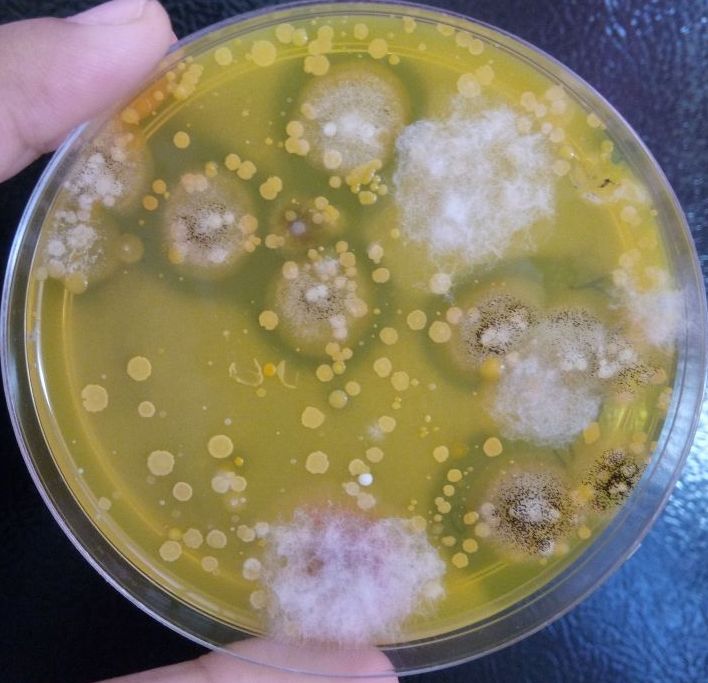What is the Difference Between Phosphate Solubilizing and Phosphate Mobilizing
The key difference between phosphate solubilizing and phosphate mobilizing is that phosphate solubilizing microorganisms hydrolyze organic and inorganic insoluble phosphorus compounds to soluble phosphorus while phosphate mobilizing microorganisms mobilize insoluble and fixed forms of phosphorus in the soil through solubilization and mineralization.
Phosphorus is one of the essential plant nutrients. It is second only to nitrogen and is considered one of the most growth-limiting macronutrients of plants. Soil is rich in insoluble phosphates. But it is deficient in soluble phosphates, which can be absorbed by plants. Plants absorb phosphorus in the form of orthophosphate. Phosphorus deficiency severely restricts plant growth, development, and yield. In order to overcome P scarcity in the agricultural soil, phosphorus fertilizers are added. In fact, phosphorus is the second most applied nutrient in agriculture. Soil microorganisms play an essential role in the P cycling and phosphorus nutrition of plants. Some microorganisms participate in mineral phosphate solubilization and facilitate phosphate mobilization in the soil.
CONTENTS
1. Overview and Key Difference
2. What is Phosphate Solubilizing
3. What is Phosphate Mobilizing
4. Similarities – Phosphate Solubilizing and Phosphate Mobilizing
5. Phosphate Solubilizing vs Phosphate Mobilizing in Tabular Form
6. Summary – Phosphate Solubilizing vs Phosphate Mobilizing
What is Phosphate Solubilizing?
Phosphate solubilizing microorganisms are the microbes that have mineralization and solubilization potential for organic and inorganic phosphorus, respectively. Phosphorus solubilizing activity is determined by the ability of microbes to release metabolites such as organic acids, through which their hydroxyl and carboxyl groups chelate the cation bound to phosphate, the latter being converted to soluble forms.
Phosphate solubilization takes place through various microbial processes/mechanisms, including organic acid production and proton extrusion. A wide range of microbial P solubilization mechanisms exist in nature, and much of the global cycling of insoluble organic and inorganic soil phosphates is attributed to bacteria and fungi. Phosphorus solubilization is carried out by a large number of saprophytic bacteria and fungi acting on sparingly soluble soil phosphates. Among different microbes, bacterial species from genera Bacillus, Pseudomonas, and Rhizobium, fungal species from genera Penicillium and Aspergillus, actinomycetes, and arbuscular mycorrhizae are popular phosphate solubilizing microbes inhabiting the soil.

Figure 01: Clear Halo Production by PSM
Phosphate solubilizing microorganisms are isolated and characterized on a medium called Pikovaskaya’s (PVK) medium. This medium contains insoluble tricalcium phosphate (TCP)/hydroxyapatite as the sole P source. Phosphate solubilising microorganisms produce a clear halo around their colonies. The ability of phosphate solubilising microbes to solubilize insoluble phosphates in the soil is a good attribute in the development of biofertilizers for agriculture enhancement. Hence, they are widely applied as biofertilizers in agronomic practices since they play a major role to eliminate the phosphorous deficiency of soil in a more environmentally friendly, cost-effective and sustainable manner than chemical fertilizers.
What is Phosphate Mobilizing?
Phosphate mobilizing microorganisms are the microbes that participate in the mobilization of phosphorus in the soil. The majority of phosphate mobilizing microbes are phosphate solubilizing microorganisms. They release phosphorus from the insoluble and fixed forms of phosphorus in the soil. As a result, soil P availability increases and the plants are able to absorb phosphorus in a sustainable manner.

Figure 02: Phosphorus Cycle
Phosphate mobilizing microbes mobilize phosphorus by changing pH and also by producing chelating substances. The terms phosphate solubilizing and phosphate mobilizing are interchangeably used to refer to phosphate solubilizing microorganisms. Phosphate mobilizing microbes are involved in the transformation processes of soil P.
What are the Similarities Between Phosphate Solubilizing and Phosphate Mobilizing?
- The use of phosphate solubilizing and phosphate mobilizing microorganisms is a promising approach for improving P fertilization efficiency in agriculture.
- The majority of phosphate mobilizing microbes are phosphate solubilizing microbes.
- Both types of microbes work in the soil and increase the P availability in soil.
What is the Difference Between Phosphate Solubilizing and Phosphate Mobilizing?
The key difference between phosphate solubilizing and phosphate mobilizing is that phosphate solubilizing microorganisms hydrolyze organic and inorganic insoluble phosphorus compounds to soluble phosphorus while phosphate mobilizing microorganisms mobilize insoluble and fixed forms of phosphorus in the soil through solubilization and mineralization.
The following table summarizes the difference between phosphate solubilizing and phosphate mobilizing.
Summary – Phosphate Solubilizing vs Phosphate Mobilizing
Phosphorus is one of the major macronutrients required by plants. Microbes are an integral part of the phosphorus cycle. The majority of the soil phosphorus exists in the form of insoluble phosphates. Phosphate mobilizing microbes help in the mobilization of insoluble and fixed forms of phosphorus in the soil. Phosphate solubilizing microbes solubilise insoluble inorganic phosphates into soluble P. Both phosphate solubilizing and mobilizing microbes are important as biofertilizers in agriculture since they increase soil P availability for plants. Thus, this summarizes the difference between phosphate solubilising and phosphate mobilizing.
Reference:
1. Kamh, Mahmoud, et al. “Mobilization of Soil and Fertilizer Phosphate by Cover Crops.” Plant and Soil, Kluwer Academic Publishers.
2. Kalayu, Girmay. “Phosphate Solubilizing Microorganisms: Promising Approach as Biofertilizers.” International Journal of Agronomy, Hindawi, 9 June 2019.
Image Courtesy:
1. “Pikovskaya’s Plate showing Phosphate solubilising microorganims” By Asawari – Own work (CC BY 4.0) via Commons Wikimedia
2. “Phosphorus Cycle copy” By Welcome1To1The1Jungle at English Wikipedia (CC BY 3.0) via Commons Wikimedia
ncG1vNJzZmivp6x7pbXFn5yrnZ6YsqOx07CcnqZemLyue9ahmK1lmah6tbTEZpuinpaav6a6wp5km52krLKmuoypn6iroJ2utbGMrKalrZKeuarGyKeeZpmemXqxtM6sp6GZpJp6rrvBoqOispmjtHA%3D